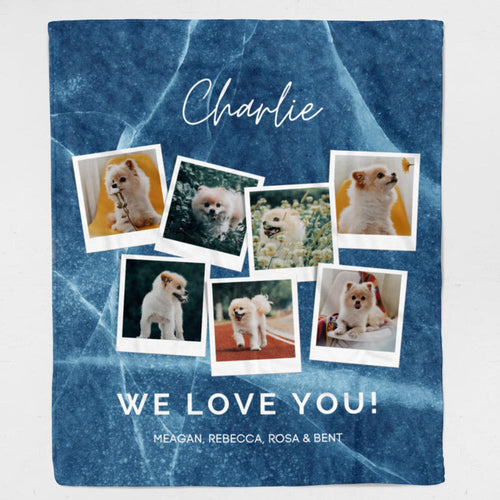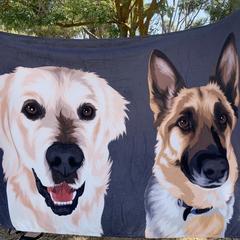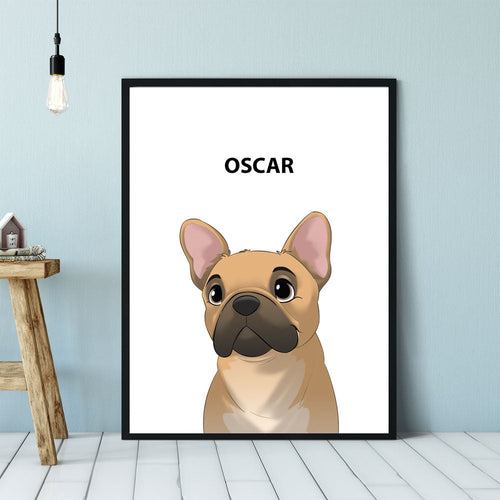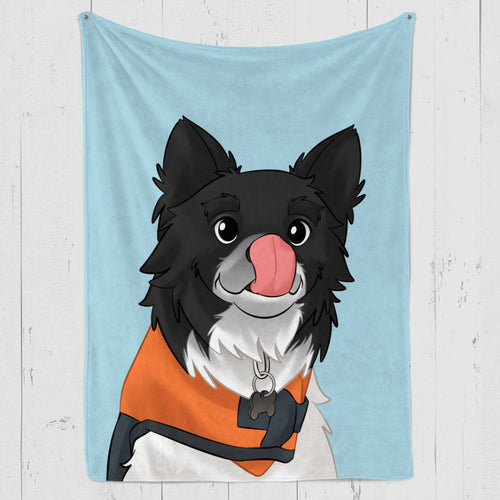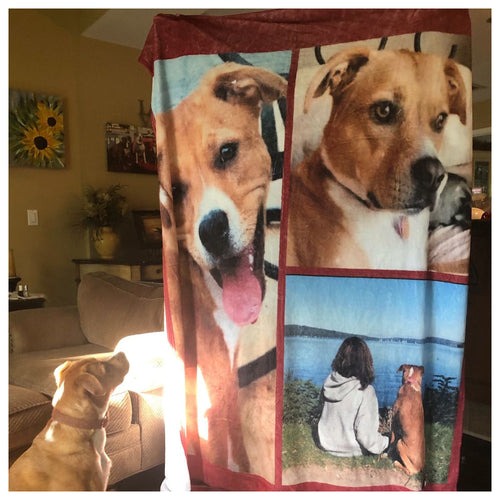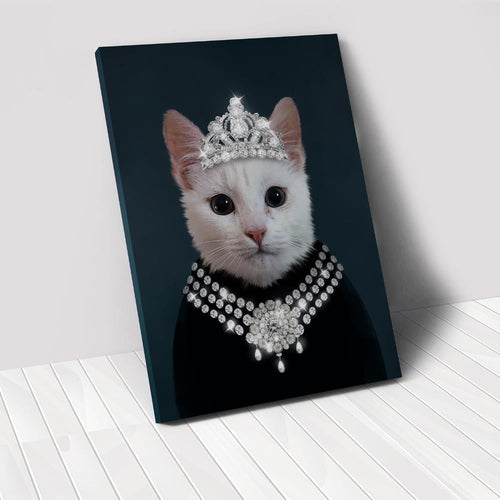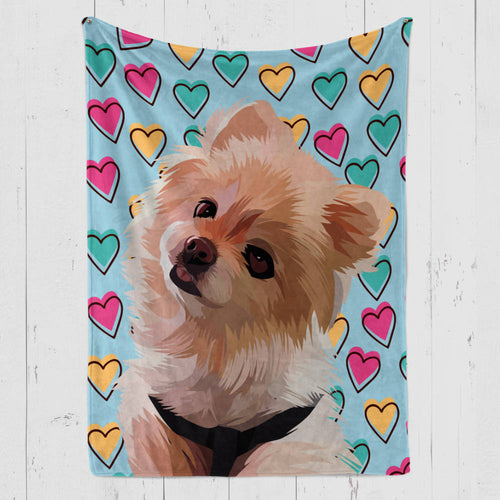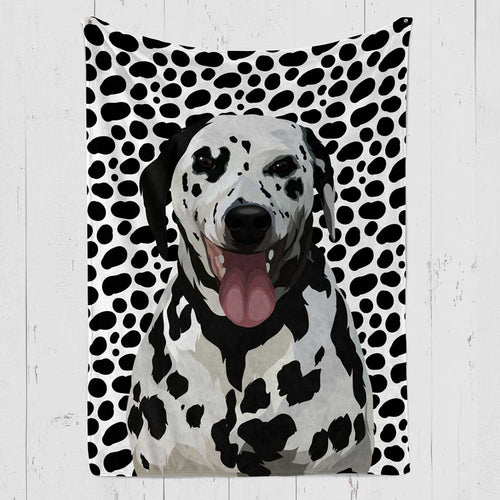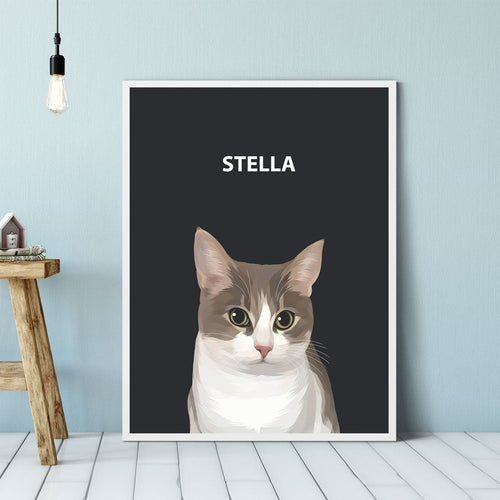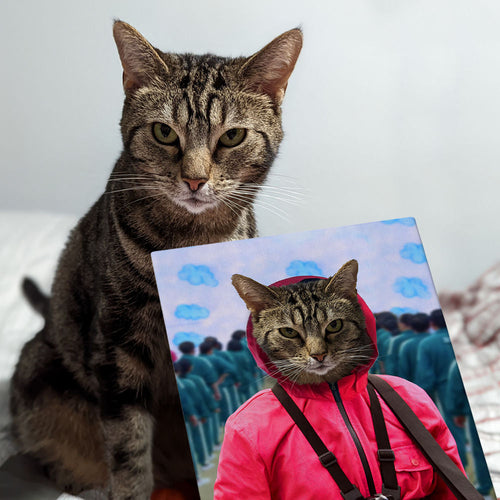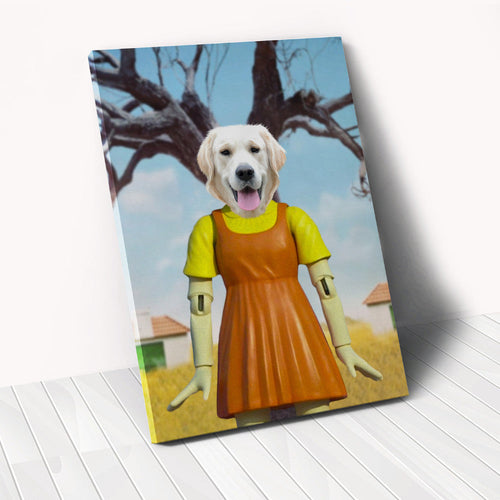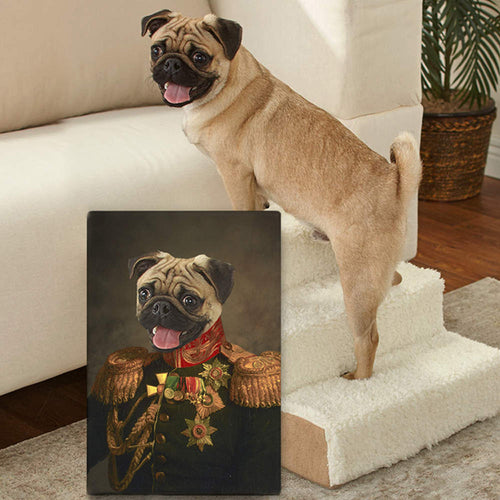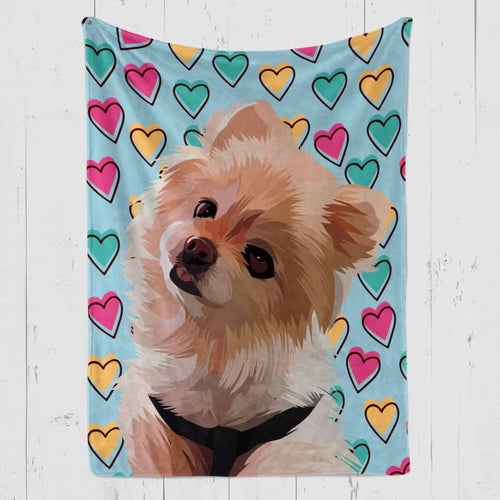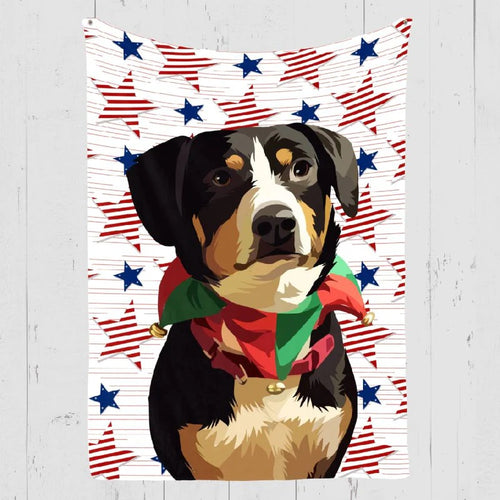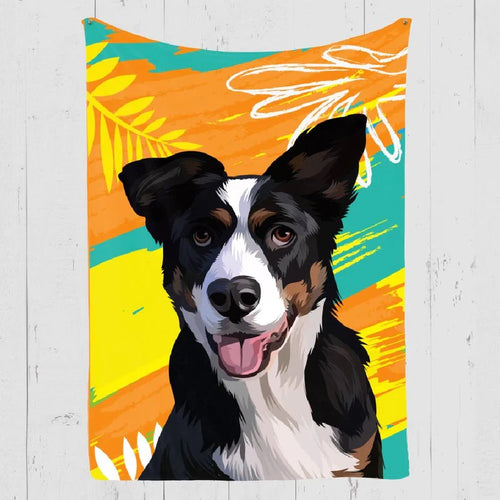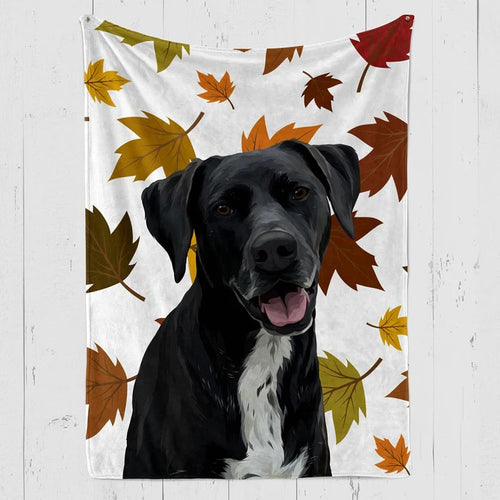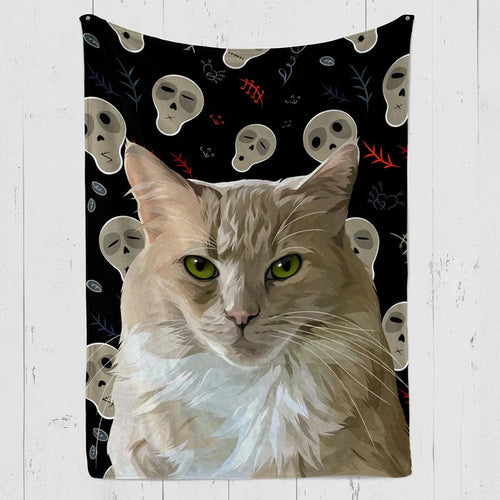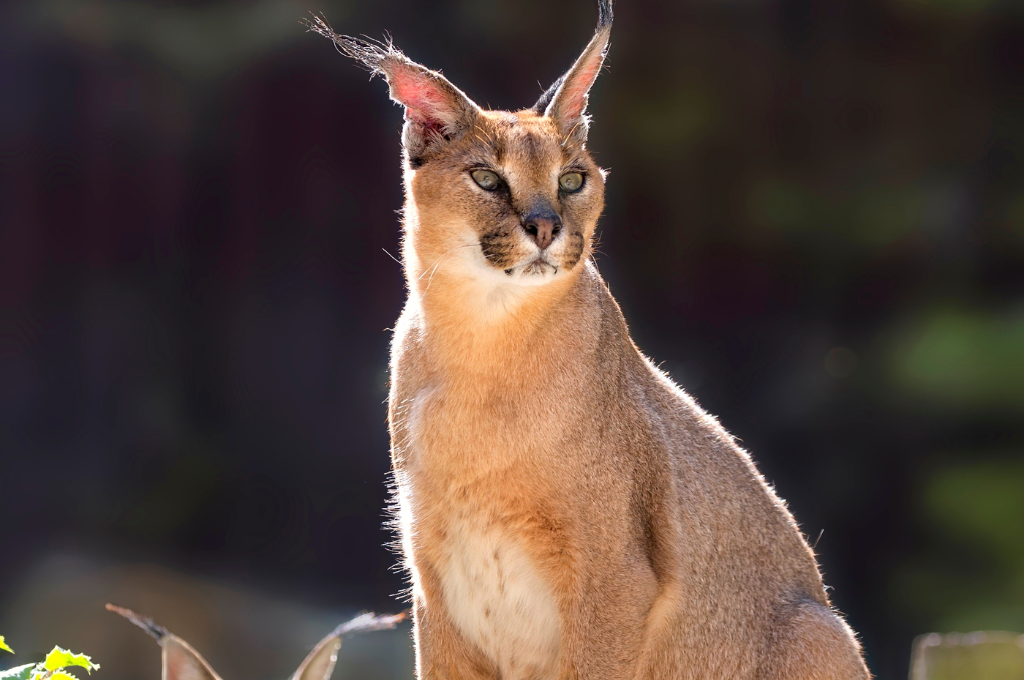Introduction

Orange and white cat breeds will surely interest you, whether you are considering getting a cat or already have one at home. In addition to their attractive appearance, these wonderful cats have unique patterns and a wide range of coat colors. Due to heredity, these furry friends with vibrant colors are present in many different cat breeds.
In this blog, we will explore several orange and white cat breeds that will make your life full of joy.
What is the Origin Story of Orange and White Cat Breeds?
The history of the orange and white cat can be traced back to the confluence of natural selection and genetics. Due to genetic variation, cats can have various colors and patterns. The pigment pheomelanin is responsible for the orange shade of cats. The "O" gene is the one that gives cats their orange coloring.
On the other hand, a lack of color in the coat is typical for white cats due to a genetic defect that prevents the formation of pigment cells. This mutation can occur without reference to the orange color gene. Orange and white cat breeds result from crossing cats that carry both the genetic mutation causing white fur and the "O" gene for orange coloring. Orange and white cats can have various patterns, such as orange tabby with white spots, solid orange with white markings, and more.
Natural selection and selective breeding by humans have evolved orange and white cat breeds over time, giving each variety its specific traits and attributes. In addition, breeders sought to improve these breeds' temperament and coat quality, resulting in the wide variety of orange and white fur cats available today.
What Determines a Cat’s Coat Color?
Genetics plays a major role in determining a cat's coat color. Cat fur has different shades and patterns due to the production and dispersion of pigment, which is regulated by several genes. The following are important elements that determine a cat's coat color:
- Genetic makeup: A cat's coat color is determined by its genes inherited from its parents. Each gene's variants (alleles) result in different colors and patterns. For example, the 'O' gene is the gene that causes the orange coloration, while the 'B' gene is the gene that causes the black pigment.
- Melanin production: The pigment that gives a cat's coat its color is called melanin. Melanin comes in two varieties: pheomelanin, which creates red and orange hues, and eumelanin, which creates black and brown hues. The amount and distribution of these pigments determine the overall coat color.
- Allelic interactions: Different alleles of the same gene or genes interacting can lead to different coat patterns and shades. For example, the "O" allele takes precedence over other color alleles for orange cats and gives them orange hair.
- Modifier genes: These genes can change how other genes are expressed, affecting the amount or distribution of pigment in the coat. Within a particular breed or population, these genes can produce coat color and pattern variations.
- Sex characteristics: Cat sex chromosomes are associated with certain coat patterns and shades. For example, cats need only one copy of the orange allele to have orange fur, while cats need two copies because the gene for orange coloring is located on the X chromosome.
- Environmental factors: Although a cat's coat color is mostly determined by genetics, environmental variables such as temperature changes and exposure to sunlight can occasionally affect the appearance of a cat's coat, causing it to lighten or darken over time.
What Are Some Distinctive Characteristics of Orange and White Cat Breeds?
In addition to coat color, orange and white cat breeds—also referred to as ginger or marmalade cats (when they have orange fur) have several distinguishing features. The following notable characteristics are often associated with orange and white fur pattern cat breeds:
- Affectionate nature: Many orange tabby cats and white cats are known to be sociable and loving. They love to chat and cuddle with their owners and often appreciate human company.
- Playfulness: These cats love games and toys that stimulate their innate hunting instincts. They are often lively and playful. They may have a particularly strong preference for interactive play, such as fetch or chase toys.
- Intelligence: Many orange and white kittens are bright and quick learners. They enjoy mentally stimulating hobbies and puzzle toys and are often teachable commands or tricks.
- Strong owner-cat bond: These popular cat breeds often form close relationships with their owners and may actively seek their love and care. They would love to sit on their owners' laps or accompany them around the house.
- Courage and confidence: People often characterize orange tabby and white cats as bold and confident. They are inquisitive, adventurous and eager to explore their environment.
- Different coat patterns: Cats that are orange and white can have different coat patterns, such as calico or tortoiseshell patterns with orange spots, orange tabbies with white spots, and solid orange with white markings.
- Health and lifespan: White and orange cats are usually as healthy as cats of other colors, although coat color does not directly affect health. They can lead long and happy lives if given proper nutrition and care.
What Are Some Popular Orange and White Cat Breeds?
Now that you know the history and characteristics of orange and white cat breeds, here are some of the most popular fluffballs around the world:
American Shorthair

This unique breed can give birth to orange tabby cats that have mackerel, ticked tabby, or classic patterned coats.
- Height: 9 to 11 inches
- Weight: Range from 8 to 15 pounds.
- Personality: Easy-going, adaptable and friendly
- Coat: Dense, short and plush
- Color: Bi-colors, calico, solid colors
- Life Expectancy: 15 to 20 years
Maine Coon

One of the oldest breeds in the Maine Coon is a large and domesticated cat breed that is often referred to as “gentle giants.”
- Height: 10 to 16 inches
- Weight: Range from 10 to 25 pounds.
- Personality: Friendly, sociable, intelligent and affectionate
- Coat: Dense, soft and luxurious
- Color: Tabby, bi-color and calico
- Life Expectancy: 12 to 15 years
British Shorthair

Even though they may not agree to being held or petted for extended periods of time, British Shorthairs make fantastic family cats who love spending time with their human companions.
- Height: 12 to 14 inches
- Weight: Range from 9 to 17 pounds.
- Personality: Friendly but not very affectionate
- Coat: Dense, strong, short, and flexible coat
- Color: Blue, white, black, red, cream, fawn, cinnamon and silver
- Life Expectancy: 15 to 20 years
Scottish Fold

The Scottish Fold cats have unique folded ears and come in various orange colors.
- Height: 8 to 10 inches
- Weight: Range from 6 to 13 pounds.
- Personality: Playful and outgoing
- Coat: Short and long-haired coat
- Color: White, blue, black, red, cream and silver
- Life Expectancy: 14 to 16 years
Munchkin

These ginger cat racehorses can run around your house despite having their signature short legs.
- Height: 6 to 9 inches
- Weight: 5 to 9 pounds.
- Personality: Playful, friendly, and outgoing
- Coat: Short and long-haired soft coat
- Color: Solid color, tabby and bi-color
- Life Expectancy: 12 to 15 years or more
Special Maintenance and Care Tips for Orange and White Cat Breeds
Regular trimming minimizes shedding and prevents matting, necessary to maintain the vibrant coat of orange and white cat breeds. Weekly brushing helps distribute natural oils and reduces hair growth. Additionally, try to provide them with a well-balanced diet high in nutrients and protein to maintain coat and overall condition. Some other tips to keep your orange kitty healthy and tidy are as follows:
- Keep the litter box spotless to avoid stress and accidents.
- Give them plenty of interactive toys and scratching posts to keep them cognitively engaged and avoid boredom.
- Frequent veterinary check-ups are necessary to monitor their health and solve problems quickly.
- Finally, shower lots of love and care to strengthen your relationship with your furry baby.
With great cuteness comes great demand for affection and proper maintenance!
Final Thoughts
The fascinating white and orange striped cats, each with their own distinct charm and personality, captivate us with their beauty and character. Our relationship with our orange and white feline friends is based on love and friendship that brings happiness and well-being into our lives.
Let's cherish every second we have to spend with these amazing cats and make sure they always get the love and attention they deserve.
Frequently Asked Questions
Some of the most common orange and white cat breeds include American Shorthair, British Shorthair, Maine Coon, Munchkin, Scottish Fold and Ginger.
Typically, white and orange-striped cats can have an average height of 6 inches to 16 inches.
Ginger cats are often described as particularly friendly. Studies have shown that these cats tend to be the friendliest, calmest, and easiest to train.
Orange and white cats are said to have a lively and friendly nature. Although opinions vary widely, some gingers can have eccentric tendencies. But chances are, if someone owns a big, fluffy orange and white cat, they are probably charming.
Reference links:
https://www.trustedhousesitters.com/blog/pets/orange-cat-breeds/
https://wagwalking.com/daily/orange-cats
https://www.womansday.com/life/pet-care/g46008728/orange-cat-breeds/
https://www.catster.com/lifestyle/different-cat-colors/
https://lizskittybootcamp.com/2020/08/24/cat-genetics-a-progressive-look-at-coat-colors-patterns/
Latest Review on Woof Blankets
To have such a masterpiece by my side every day is a gift for me and my memories with Rex. Thank you WoofBlankets for such an opportunity to recreate his image on a blanket.Lara o’ Miguel US, California

COLLECTION WORTH EVERY PENNY
BEST SELLERS
-
Woofy Single Color Custom Pet Blanket
![Woofy Single Custom Pet Blanket – Woof Blanket]()
- -41%
BlanketsSHOP NOW- Regular price
- from $64.95
- Sale price
- from $64.95
- Regular price
-
$109.95 - Unit price
- per
Sold out -
The French Sailor - Custom Pet Portrait
![]()
- -25%
CanvasSHOP NOW- Regular price
- from $59.95
- Sale price
- from $59.95
- Regular price
-
$79.95 - Unit price
- per
Sold out -
Summer Time Custom Pet Blanket
![Summer Time Custom Pet Blanket]()
- -39%
BlanketsSHOP NOW- Regular price
- from $69.95
- Sale price
- from $69.95
- Regular price
-
$114.95 - Unit price
- per
Sold out -
Pet Memorial Custom Photo Collage Blanket
![Personalized pet memorial quilt with photos]()
- -41%
BlanketsSHOP NOW- Regular price
- from $64.95
- Sale price
- from $64.95
- Regular price
-
$109.95 - Unit price
- per
Sold out -
4th of July Custom Pet Blanket
![4th of July Custom Pet Blanket Online]()
- NEW
- -39%
BlanketsSHOP NOW- Regular price
- from $69.95
- Sale price
- from $69.95
- Regular price
-
$114.95 - Unit price
- per
Sold out -
Modern Pet Portraits
![Cute Dog Modern Pet Portraits Online]()
- NEW
- -36%
CanvasSHOP NOW- Regular price
- from $59.95
- Sale price
- from $59.95
- Regular price
-
$93.95 - Unit price
- per
Sold out -
The Admiral - Custom Pet Portrait
![The Admiral - Custom Pet Portrait Online]()
- NEW
- -25%
CanvasSHOP NOW- Regular price
- from $59.95
- Sale price
- from $59.95
- Regular price
-
$79.95 - Unit price
- per
Sold out -
Woof Splash Custom Pet Blanket
![Woof Splash Custom Pet Blanket]()
- -39%
BlanketsSHOP NOW- Regular price
- from $69.95
- Sale price
- from $69.95
- Regular price
-
$114.95 - Unit price
- per
Sold out -
The Policeman - Custom Pet Portrait
![]()
- NEW
- -25%
CanvasSHOP NOW- Regular price
- from $59.95
- Sale price
- from $59.95
- Regular price
-
$79.95 - Unit price
- per
Sold out -
The General - Custom Pet Portrait
![]()
- NEW
- -25%
CanvasSHOP NOW- Regular price
- from $59.95
- Sale price
- from $59.95
- Regular price
-
$79.95 - Unit price
- per
Sold out -
Woof Love Custom Pet Blanket
![Woof Love Custom Pet Blanket]()
- -39%
BlanketsSHOP NOW- Regular price
- from $69.95
- Sale price
- from $69.95
- Regular price
-
$114.95 - Unit price
- per
Sold out -
The Ambassador - Custom Pet Portrait
![The Ambassador - Custom Pet Portrait Online]()
- NEW
- -25%
CanvasSHOP NOW- Regular price
- from $59.95
- Sale price
- from $59.95
- Regular price
-
$79.95 - Unit price
- per
Sold out -
Fall In Love Custom Pet Blanket
![Fall In Love Custom Dog Blanket]()
- NEW
- -39%
BlanketsSHOP NOW- Regular price
- from $69.95
- Sale price
- from $69.95
- Regular price
-
$114.95 - Unit price
- per
Sold out -
Cartoonized Pet Portraits (New)
![Cartoonized Pet Custom Portraits Online]()
- -36%
SHOP NOW- Regular price
- from $59.95
- Sale price
- from $59.95
- Regular price
-
$93.95 - Unit price
- per
Sold out -
The Classy Lady - Custom Pet Portrait
![The Classy Lady]()
- NEW
- -25%
CanvasSHOP NOW- Regular price
- from $59.95
- Sale price
- from $59.95
- Regular price
-
$79.95 - Unit price
- per
Sold out -
The Duke - Custom Pet Portrait
![The Duke - Custom Pet Portrait]()
- NEW
- -25%
CanvasSHOP NOW- Regular price
- from $59.95
- Sale price
- from $59.95
- Regular price
-
$79.95 - Unit price
- per
Sold out -
Dog In Suit- Custom Pet Portrait
![Dash Dog In Suit- Custom Pet Portrait Online]()
- NEW
- -25%
CanvasSHOP NOW- Regular price
- from $59.95
- Sale price
- from $59.95
- Regular price
-
$79.95 - Unit price
- per
Sold out -
The Princess - Custom Pet Portrait
![]()
- NEW
- -25%
CanvasSHOP NOW- Regular price
- from $59.95
- Sale price
- from $59.95
- Regular price
-
$79.95 - Unit price
- per
Sold out -
Modern Pet Portrait with One Mug
![Modern Pet Portrait with One Mug]()
- -25%
Print MaterialSHOP NOW- Regular price
- from $99.95
- Sale price
- from $99.95
- Regular price
-
$133.95 - Unit price
- per
Sold out -
The Aristocrat - Custom Pet Portrait
![The Aristocrat - Custom Pet Portrait At Best Price]()
- NEW
- -25%
CanvasSHOP NOW- Regular price
- from $59.95
- Sale price
- from $59.95
- Regular price
-
$79.95 - Unit price
- per
Sold out -
Single Color Custom Blanket with 1 Mug
![Single Color Custom Blanket with 1 Mug]() BlanketsSHOP NOW
BlanketsSHOP NOW- Regular price
- from $99.95
- Sale price
- from $99.95
- Regular price
-
- Unit price
- per
Sold out -
Single Color Custom Blanket with 2 Pillows
![Single Color Custom Pet Blanket with 2 Pillows]()
- -21%
BlanketsSHOP NOW- Regular price
- from $99.95
- Sale price
- from $99.95
- Regular price
-
$125.95 - Unit price
- per
Sold out -
The Dog in Suit Custom Pet Mug
![]()
- -20%
MugsSHOP NOW- Regular price
- $39.95
- Sale price
- $39.95
- Regular price
-
$49.95 - Unit price
- per
Sold out -
Angel Custom Pet Mug
![]()
- -20%
MugsSHOP NOW- Regular price
- $39.95
- Sale price
- $39.95
- Regular price
-
$49.95 - Unit price
- per
Sold out -
This Human Belongs To - Custom Pet Mug
![]()
- NEW
- -20%
MugsSHOP NOW- Regular price
- $39.95
- Sale price
- $39.95
- Regular price
-
$49.95 - Unit price
- per
Sold out -
It's Not Dog Hair Custom Pet Mug
![]()
- NEW
- -20%
MugsSHOP NOW- Regular price
- $39.95
- Sale price
- $39.95
- Regular price
-
$49.95 - Unit price
- per
Sold out -
My Dog Is My Valentine Custom Pet Mug
![]()
- NEW
- -20%
MugsSHOP NOW- Regular price
- $39.95
- Sale price
- $39.95
- Regular price
-
$49.95 - Unit price
- per
Sold out -
3 Photos With Message Custom Pet Mug
![]()
- NEW
- -20%
MugsSHOP NOW- Regular price
- $39.95
- Sale price
- $39.95
- Regular price
-
$49.95 - Unit price
- per
Sold out -
My Valentine Has Four Legs- Personalized Mugs
![]()
- NEW
- -20%
MugsSHOP NOW- Regular price
- $39.95
- Sale price
- $39.95
- Regular price
-
$49.95 - Unit price
- per
Sold out -
Dog Mamma Custom Pet Coffee Mug
![]()
- -20%
MugsSHOP NOW- Regular price
- $39.95
- Sale price
- $39.95
- Regular price
-
$49.95 - Unit price
- per
Sold out -
Uncle Sam - Custom Pet Portrait
![]()
- NEW
- -25%
CanvasSHOP NOW- Regular price
- from $59.95
- Sale price
- from $59.95
- Regular price
-
$79.95 - Unit price
- per
Sold out -
The Revolutionary Emperor - Custom Pet Portrait
![]()
- NEW
- -25%
CanvasSHOP NOW- Regular price
- from $59.95
- Sale price
- from $59.95
- Regular price
-
$79.95 - Unit price
- per
Sold out -
The Princess Paws - Custom Pet Portrait
![]()
- -25%
CanvasSHOP NOW- Regular price
- from $59.95
- Sale price
- from $59.95
- Regular price
-
$79.95 - Unit price
- per
Sold out -
Exclusive Custom Pet Blanket
![Exclusive Custom Pet Blanket]()
- -39%
BlanketsSHOP NOW- Regular price
- from $69.95
- Sale price
- from $69.95
- Regular price
-
$114.95 - Unit price
- per
Sold out -
The Dark Crusader Knight - Custom Pet Portrait
![]()
- -25%
CanvasSHOP NOW- Regular price
- from $59.95
- Sale price
- from $59.95
- Regular price
-
$79.95 - Unit price
- per
Sold out
